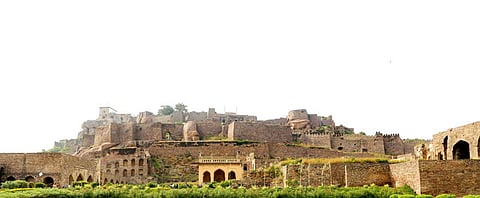

HYDERABAD: Celebrated on April 18 every year, World Heritage Day is also known as International Day for Monuments and Sites and is aimed at creating awareness about cultural heritage and the need to preserve and protect it for future generations. The day was first proposed by the International Council on Monuments and Sites (ICOMOS) in 1982 and was later approved by UNESCO in 1983. It is celebrated globally with various events and activities such as guided tours, exhibitions, seminars, and conferences to raise awareness about the importance of preserving cultural heritage.
Each year, a theme is chosen to focus on a specific aspect of cultural heritage. In 2023, the theme is “Complex Pasts: Diverse Futures”, which emphasises the diversity and complexity of human pasts and how it can be used to shape our future. Recently, at an event held last month, Anant Maringanti, founder of Hyderabad Urban Lab mentioned the archival works being carried out in various cities. “These things are happening across cities almost instinctively, people are becoming amateur archaeologists. In this way, past is becoming available to us as a complex resource. We need to dig into the past and find out ways of retelling our stories in a different way,” he had said.
Hyderabad, a city with rich cultural elements already has a UNESCO heritage tag for gastronomy and has been awarded Asia-Pacific Awards for the restoration of Damokonda fort and step-wells in Golconda by the organisation. A couple of days ago, Arvind Kumar, Special Chief Secretary, had said that more heritage sites in the city need to get UNESCO recognition. However, a lot more needs to be done in order to preserve the rich heritage of the city and to get a UNESCO Heritage city tag.
“A major part of it includes documentation of heritage buildings in the city,” says Anuradha Reddy, convener, INTACH (Indian National Trust for Art Conversation and Heritage) when asked what involves the conservation of heritage. “Restoration of heritage structures takes time as it involves a lengthy process. Heritage structures are highly delicate and need an in-depth study and analysis before any kind of restoration work is undertaken,” she said. “Most important words that need to be kept in mind while dealing with historical buildings are: Preservation, Conservation and Adaptive Re-use. Restoration and renovation are words that we use loosely these days, but old buildings cannot be ‘renovated’ as we remodel our homes. We should never use modern machineries such as JCBs and pneumatic drills in heritage structures,” she added.
Emphasising on the fact that heritage buildings need regular care and maintenance, Reddy added that depending on the condition of the building, the restoration work needs to be taken up under the guidance of conservation architects and heritage experts. “Before it comes to that stage, it is very important that routine inspection is done. A regular maintenance regimen should be carried out throughout the year, especially before the rains. These interventions, made at the right time, prevent water seepage into the structure and protect the foundations of the monument. We know that the original materials cannot be replaced as they cannot be found but they can be replaced with a substitute which is compatible with the original material of the structure and adds to its integrity of the monument rather than destroying it,” she said. She further mentioned that after inspection and routine maintenance, interventions should be made at three levels: short, medium and long-term, depending on the condition of the building.
“The role of the person who undertakes the work also becomes important. They must keep a track of the work done with a conditional status report which should be in public view. This is public money being used to restore a public monument, hence all should be in public view,” she added. “Two places where I have seen a proper regimen of inspection, restoration and maintenance being followed is at Qutb Shahi tombs and British Residency,” she further said. It is also important to generate awareness among people about heritage structures and that is where heritage walks and social media play a significant role.